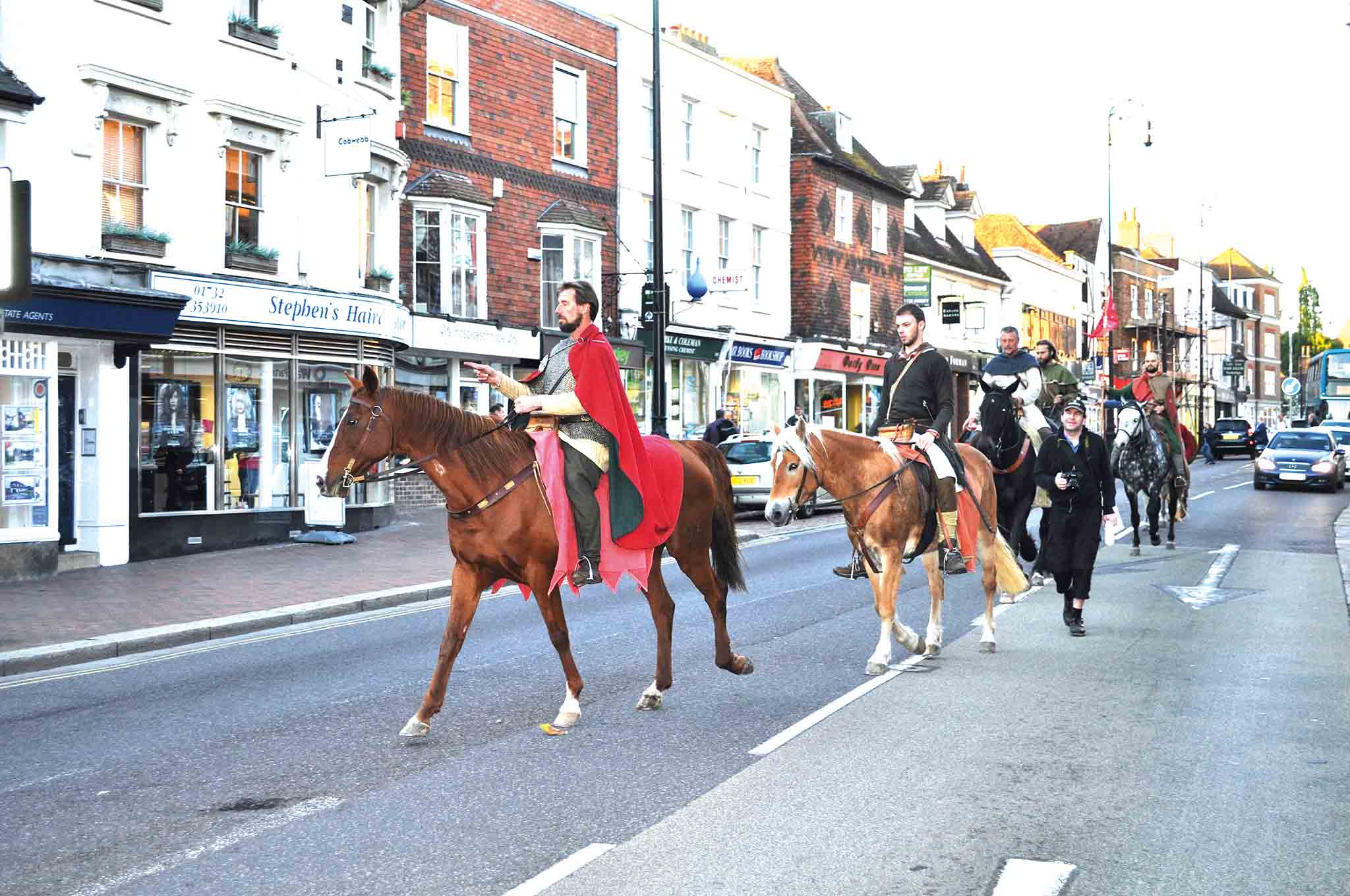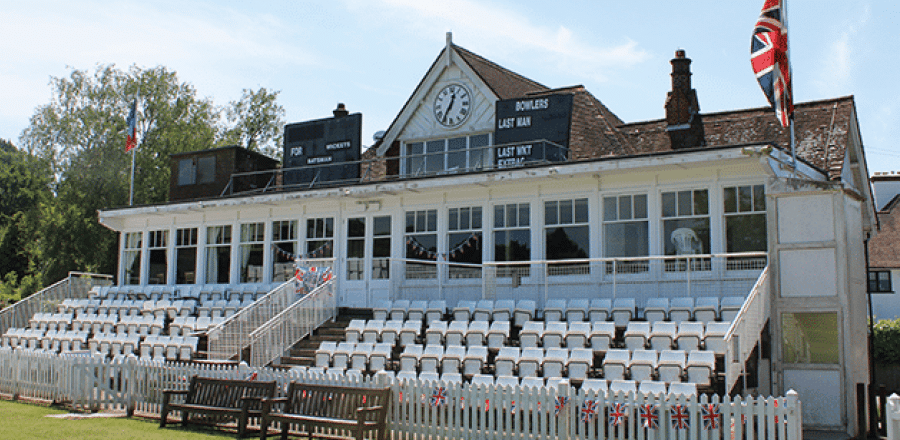A hardy band of 1066 re-enactors and their horses, dressed in full Saxon gear, were given a warm reception when they arrived in Tonbridge High Street last week.
The stopover at the town’s castle was part of an impressive 300-mile journey from York to Battle, in East Sussex, to celebrate the 950th anniversary of the last conquest of England.
Against a setting sun, there was some irony when they entered Tonbridge Castle, as it was commissioned by the Norman Lord Richard Fitzgilbert. So the castle would almost certainly not have existed had the French invasion of 1066 been repelled.
But this resting point for the English Heritage-backed group of warriors was still a fitting location, as the castle was potentially the site of a Saxon settlement by the River Medway – which to the natives would have been known as Medweg, a joining of ‘med’ (middle) and ‘weg’ (way).
“You don’t often see gateways as fine as this,” remarked Nigel Amos, dressed as King Harold, who thanked the crowd of locals, including pupils from nearby Slade Primary School, for coming to show their support.
“I’ve been doing historical re-enactment as a living for the past 20 years now, and English Heritage contacted me to ask whether the march could be done,” Nigel explained.
“While others have walked the route, it has never been attempted on horseback – as we are doing – which has made it one of the most exciting things I’ve been involved with.”
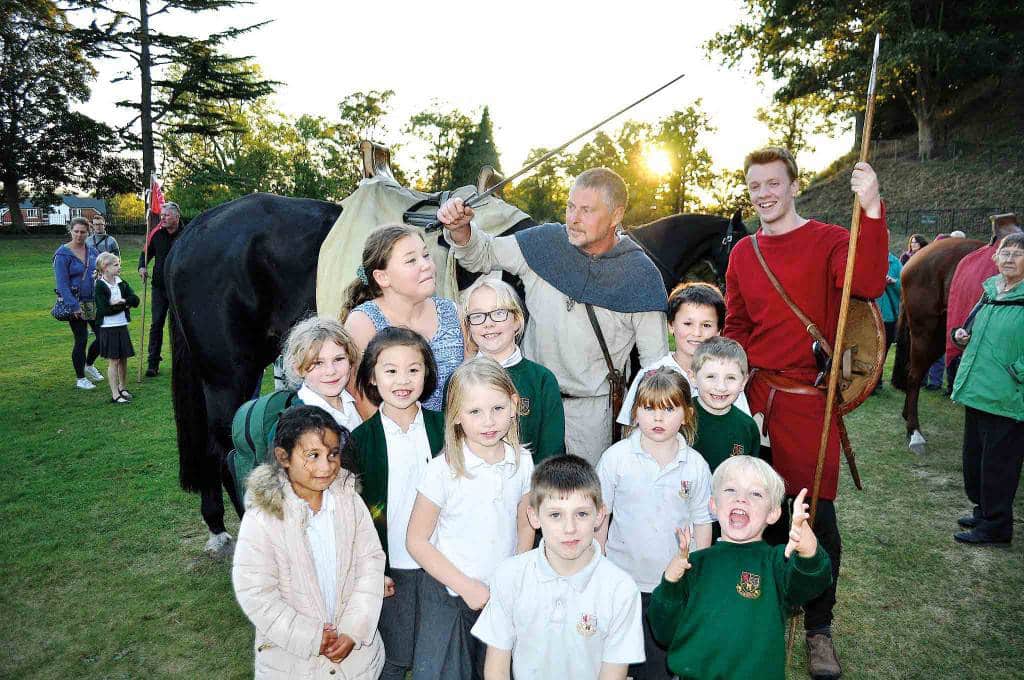
The re-enactors started at York, which is near Stamford Bridge where King Harold Godwinson defeated Norwegian King Harald Hardrada in September 1066.
As soon as he had sent the Vikings packing, Harold was forced to head south to tackle a threat from Duke William of Normandy, who said his claim on the English throne was worthier.
Harold, as Earl of Wessex – and a favourite of Edward the Confessor – ascended to the throne immediately after the old king’s death in January 1066, which set in motion a medieval game of thrones.
While the precise journey Harold took south is unknown, it’s fairly certain his army would have crossed through the Weald of Kent. And the Tonbridge area could have been a natural stopping point between London and the coast.
Retracing those 950-year-old steps posed its challenges – not the least of which was navigating the 21st-century road traffic.
“It’s been a real journey of highs and lows,” said Nigel. “There were moments when it was just beautiful, like travelling through the North Downs. But there were days when it just rained and you were travelling through an industrial estate. Generally, though, people were amazing on the route.”
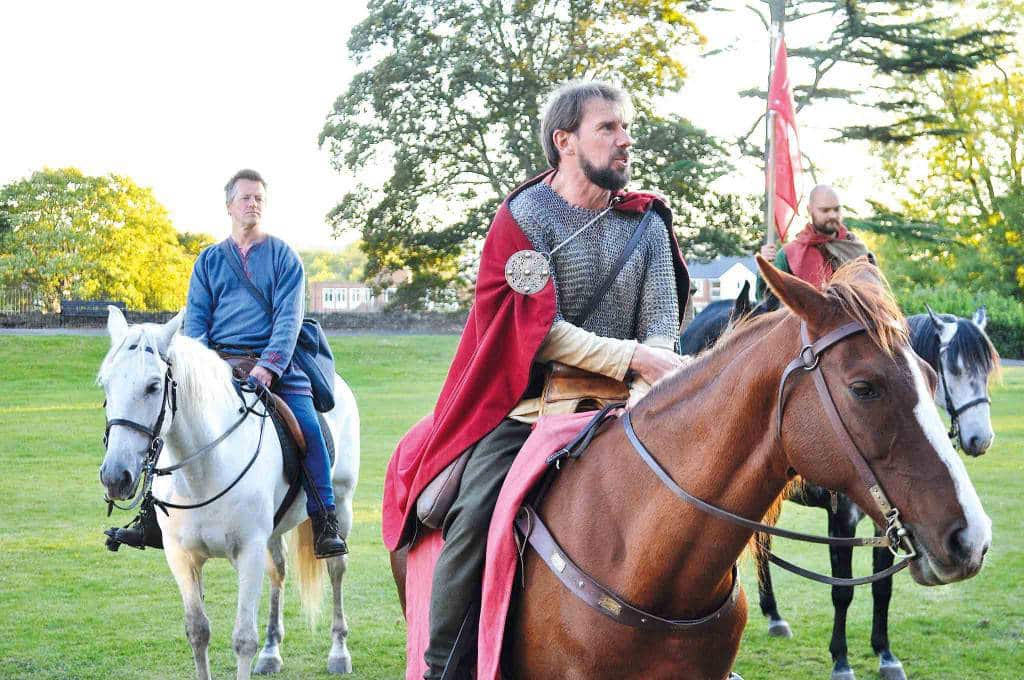
Nigel, who grew up in Medway and studied history at Canterbury Christ Church University, believes the significance of 1066 should not be undervalued.
“This was the end of the Saxon age and a real step change in the history of England. We’re living in an Anglo-Norman world, and a lot of what is here now is as a result of the conquest.”
Entering the town of Battle last weekend, the group will have caught sight of another Tonbridge connection. Local sculptor Guy Portelli has created a striking new artwork for the 950th anniversary of 1066. Depicting a Norman knight on horseback being attacked by a Saxon soldier, it’s already winning praise.
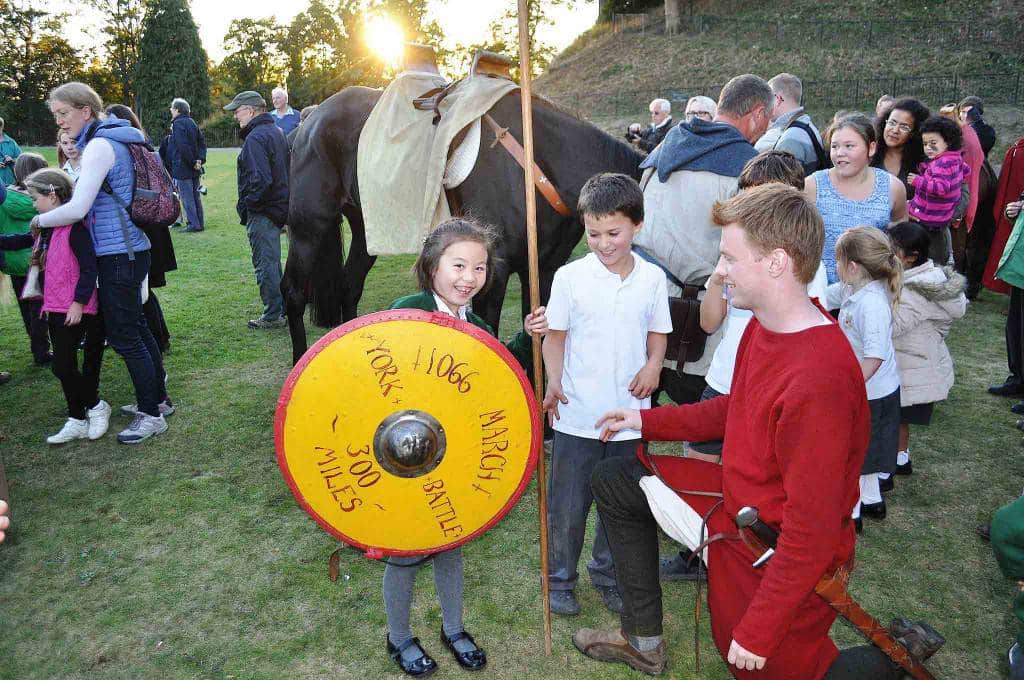
Battle Abbey marks the last stand of Harold’s forces against William on October 14, 1066.
Eager crowds gathered in the grounds to watch 1,000 people recreate the famous clash, which was depicted in the Bayeux Tapestry.
William led his cavalry charge up Senlac Ridge to strike at the Saxon defenders, and Harold received the fateful arrow to the eye that allegedly killed him.
After the fall of England’s short-lived ruler, the Norman innovations included the loathed taxation systems which began with the Doomsday Book, just 20 years after 1066.


